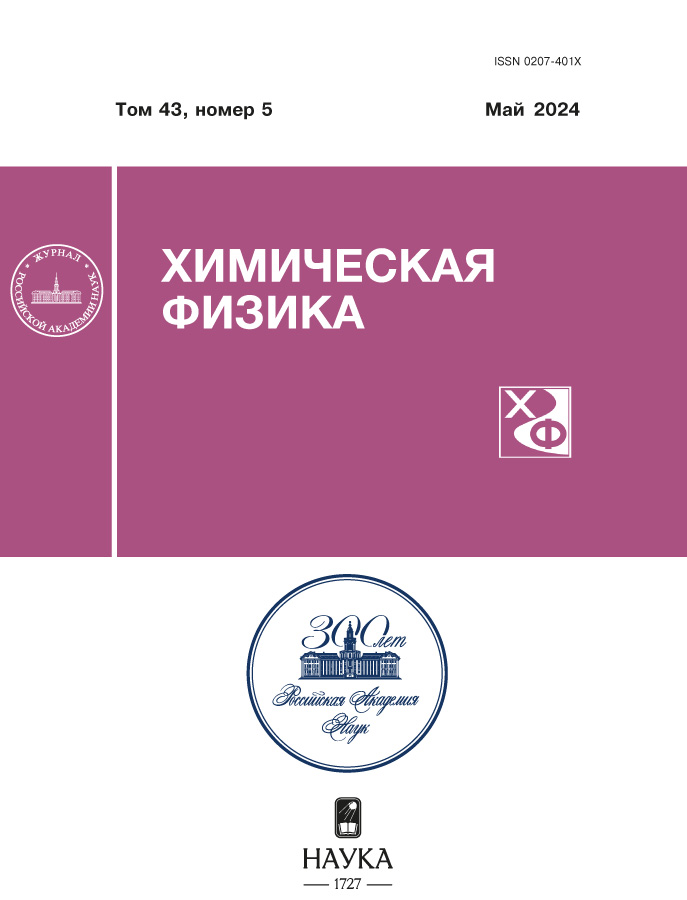Low-melting hybrid thermoplastics of ammonium polyphosphate
- 作者: Stegno E.V.1, Bychkov V.1, Abramova N.A.2, Grachev A.V.1, Lalayan V.M.1, Shaulov A.Y.1, Berlin A.A.1
-
隶属关系:
- N.N. Semenov Federal Research Center for Chemical Physics of the Russian Academy of Sciences
- “Raduga” State Engineering Design Bureau JSC named after A.Y. Bereznyak
- 期: 卷 43, 编号 5 (2024)
- 页面: 78-84
- 栏目: Chemical physics of polymeric materials
- URL: https://rjpbr.com/0207-401X/article/view/674950
- DOI: https://doi.org/10.31857/S0207401X24050099
- ID: 674950
如何引用文章
详细
In the interaction of high-molecular ammonium polyphosphate with polyethylene polyamine, thermoplastic polymers with Tg = 46.3–50.7°C, Tsoft= 43–92°C, Tflow= 85–152°C are obtained. Thermal, heat resistance, moisture resistance, and the degree of crystallinity depending on the concentration of polyethylene polyamine are measured. The bending strength of polymers and reinforced composites is measured. A chemical scheme for the formation of a polycomplex is proposed and its structure is considered.
全文:
作者简介
E. Stegno
N.N. Semenov Federal Research Center for Chemical Physics of the Russian Academy of Sciences
Email: ajushaulov@yandex.ru
俄罗斯联邦, Moscow
V. Bychkov
N.N. Semenov Federal Research Center for Chemical Physics of the Russian Academy of Sciences
Email: ajushaulov@yandex.ru
俄罗斯联邦, Moscow
N. Abramova
“Raduga” State Engineering Design Bureau JSC named after A.Y. Bereznyak
Email: ajushaulov@yandex.ru
俄罗斯联邦, Dubna
A. Grachev
N.N. Semenov Federal Research Center for Chemical Physics of the Russian Academy of Sciences
Email: ajushaulov@yandex.ru
俄罗斯联邦, Moscow
V. Lalayan
N.N. Semenov Federal Research Center for Chemical Physics of the Russian Academy of Sciences
Email: ajushaulov@yandex.ru
俄罗斯联邦, Moscow
A. Shaulov
N.N. Semenov Federal Research Center for Chemical Physics of the Russian Academy of Sciences
编辑信件的主要联系方式.
Email: ajushaulov@yandex.ru
俄罗斯联邦, Moscow
A. Berlin
N.N. Semenov Federal Research Center for Chemical Physics of the Russian Academy of Sciences
Email: ajushaulov@yandex.ru
俄罗斯联邦, Moscow
参考
- Urman K., Otaigbe J.U. // Prog. Polym. Sci. 2007. V. 32. P. 1462.
- Kobayshi N., Mori T., Suetsugiu T. et al. // J. Ceram. Soc. Jpn. 2008. V. 116 (1356). P. 875. https://doi.org/10.2109/jcersj2.116.875
- Shaulov A.Yu., Berlin A.A. // Recent Res. Devel. Polym. Sci. 2012. P. 21.
- Lalayan V.M., Stegno E.V., Nikitin A.V. et al. // Polym. Sci. B. 2015. V. 57. P. 26; https://doi.org/10.7868/S230811391501009Х
- Nechvolodova E.M., Sakovich R.A., Grachev A.V., TkachenkoL.A., Shaulov A.Yu. // Russ. J. Phys. Chem. B. 2020. V. 14. № 2. P. 318. https://doi.org/10.1134/S1990793120020116
- Korotkova Yu.A., Shaulov A.Yu., Grachev A.V. et al. // All Materials. Encyclopedic Reference. 2019. V. 8. P. 2. https://doi.org/10.1134/1994-6260-2019-0-8-2-6
- Lalayan V.M., Stegno E.V., Grachev A.V. et al. // Rep. Academ. Sci. 2016. V. 6. P. 6.
- Lalayan V.M., Stegno E.V., Grachev A.V. et al. // Rep. Academ. Sci. 2017. V. 1. P. 2.
- Shaulov A.Yu., Sakovich R.A., Grachev A.V. et al. // High-molecular Compounds. B. 2020. V. 62. P. 395. https://doi.org/10.31857/S2308113920050125
- Shaulov A., Addiego F., Federic C.E. et al. // Materials. 2021. V. 14(4). № 969. https://doi.org/10.3390/ma14040969
- Pavlushkin N.M., Zhuravlev A.K. Lowsoftening Glassses. Moscow: Energiya, 1970.
- Tick A. // Phys. Chem. Glasses. 1984. V. 25. № 6. Р. 149.
- Xu X.J., Day D.E. // Phys. Chem. Glasses. 1990. V. 31. № 5. P. 183.
- Xu X.J., Day D.E., Brow R.K., Callahan P.M. // Phys. Chem. Glasses. 1995. V. 36. № 6. P. 264.
- Shaw C.M., Shelb J.E. // Phys. Chem. Glasses. 1988. T. 29. P. 87.
- Dima V., Balta P., Eftimie M., Ispas V. // J. Optoelectron. Adv. Mater. 2006. V. 8. P. 2126.
- Maeder Th. // Intern. Mater. Rev. 2012. V. 58. P. 3.
- Mazurin O.V., Streltsina M.V., Shvayko-Shvaykovskaya T.P. Properties of Glasses and Glass-forming Melts. Reference Book. Moscow: Khimiya, 1975 [in Russian].
- Shaulov A.Yu., Vladimirov L.V., Avramenko N.V., Grachev A.V., Parfenova A.M. // Russ. Chem. Bull. 2022. V. 71. № 10. P. 2103. https://doi.org/10.1007/s11172-022-3633-9
- Prodan E.A., Prodan L.I., Ermolenko H.F. Tripolyphosphates and Their Application. Minsk: Nauka i Tekhnika, 1969 [in Russian].
- Nenakhov S.A., Pimenova V.P. // Fire and Explosion Safety. 2010. V. 19. P. 11.
- Sakovich R.A., Shaulov A.Yu., Nechvolodova E.М., Tkachenko L.A. // Russ. J. Phys. Chem. B. 2020. V. 14. № 3. P. 516. https://doi.org/10.31857/S0207401Х2005009Х
- Nechvolodova E.M., Sakovich R.A., Grachev A.V. et al. // Russ. J. Phys. Chem. B. 2017. V. 11. № 3. P. 499. https://doi.org/10.7868/S0207401Х17050077
- Nechvolodova E.M., Sakovich R.A., Grachev A.V. et al. // Russ. J. Phys. Chem. B. 2017. V. 11. № 5. P. 839. https://doi.org/10.7868/S0207401Х17090072
补充文件














